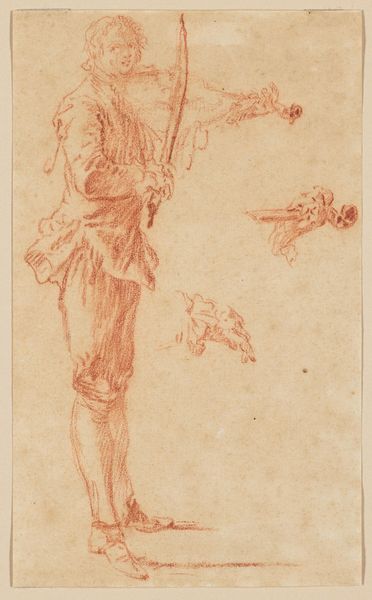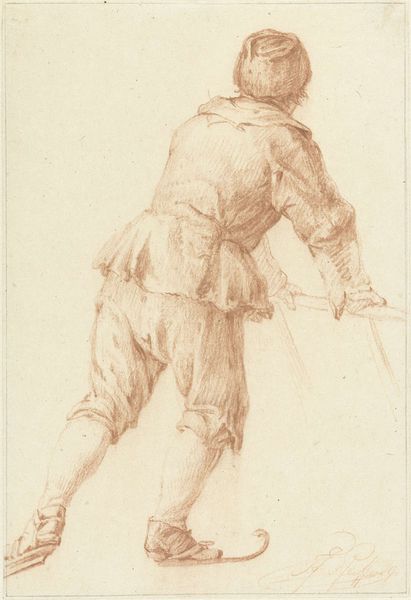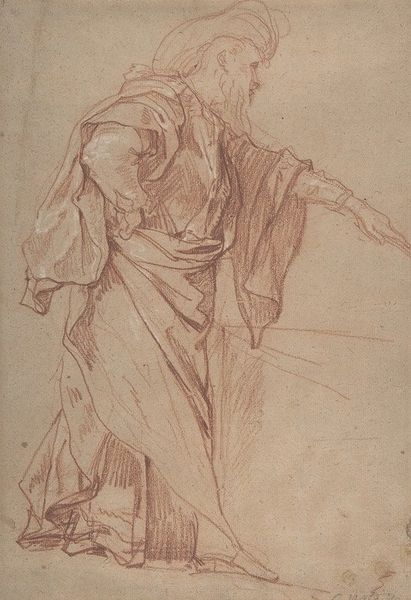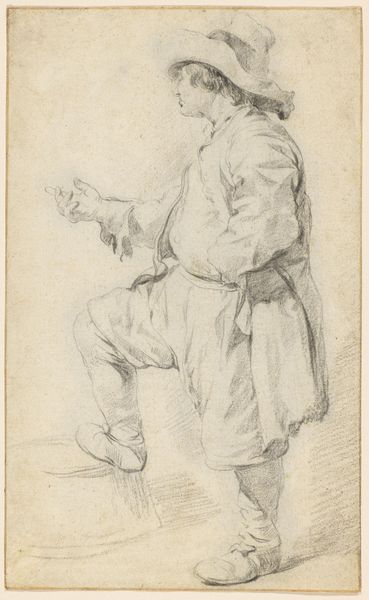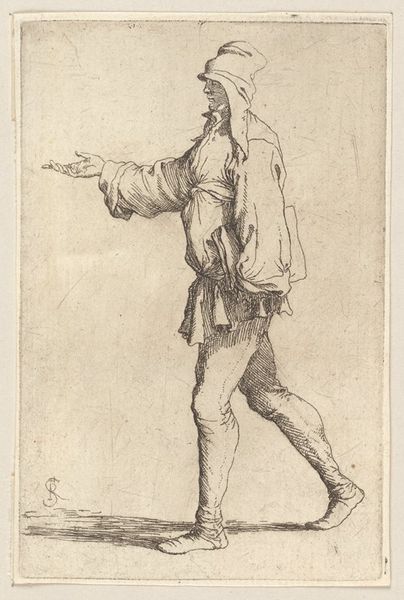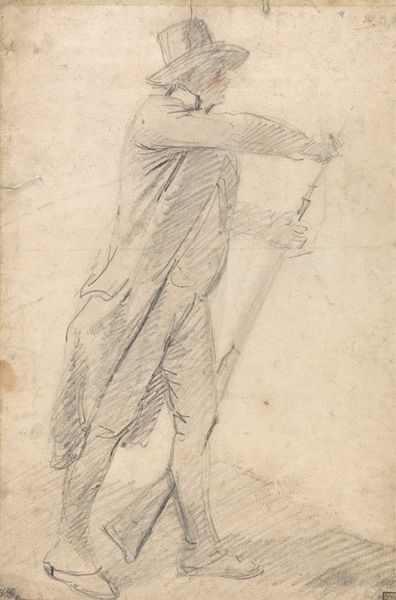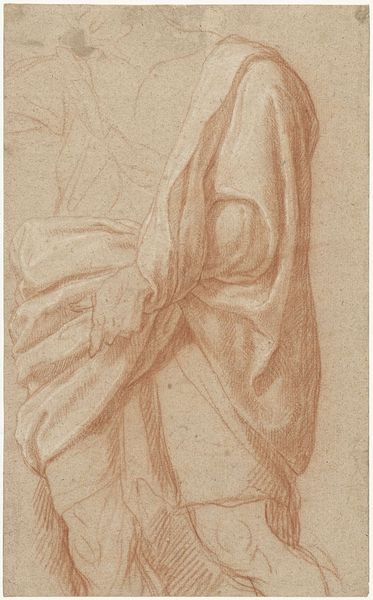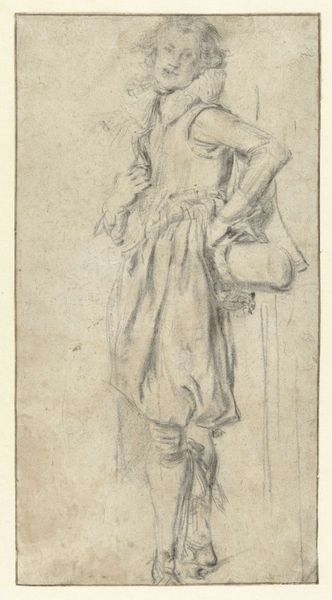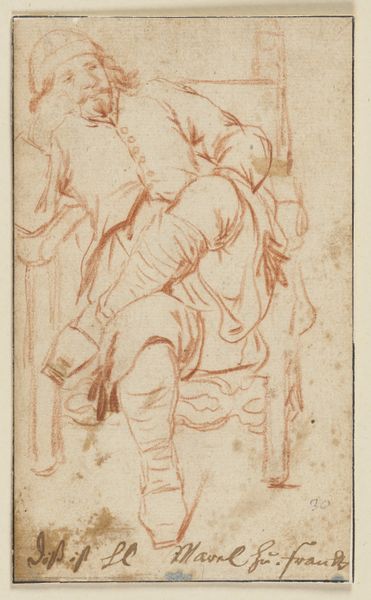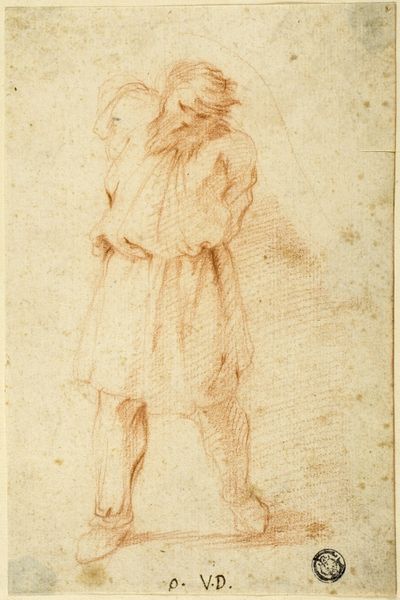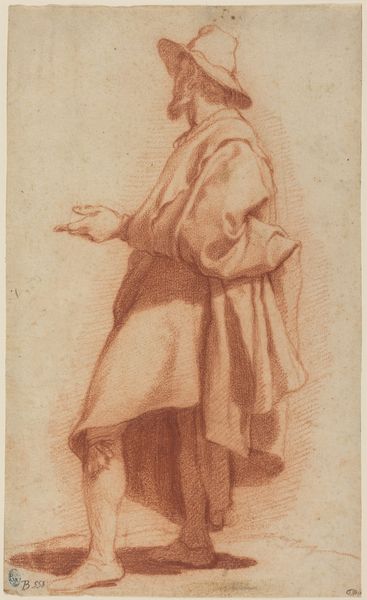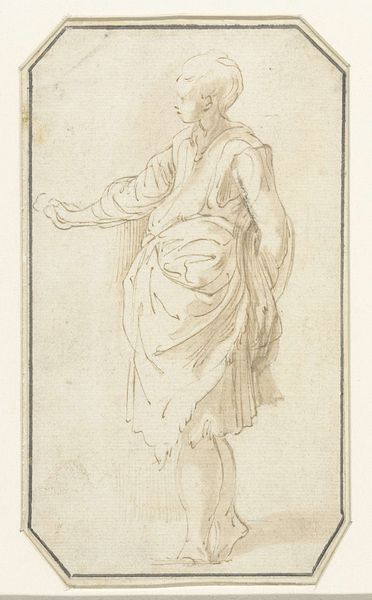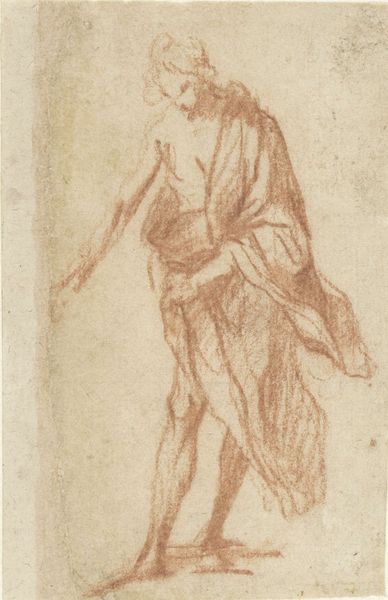
drawing, pencil
#
portrait
#
drawing
#
self-portrait
#
pencil drawing
#
pencil
Dimensions: height 217 mm, width 134 mm
Copyright: Rijks Museum: Open Domain
Curator: Here we have "Self-Portrait of Leendert Overbeek," created sometime between 1762 and 1815, rendered in pencil. Editor: The first thing that strikes me is the tentative quality of the lines, like the artist is discovering himself on the page. There's a vulnerability in his self-representation. Curator: Precisely. The artist portrays himself in the act of creating, and the means are laid bare. You can practically feel the drag of the pencil across the textured paper. Look at the layered lines. He uses hatching to suggest volume in his clothing. Notice, also, how the sleeves are rolled up, ready for work, yet his pose seems self-conscious. Editor: The rolled sleeves do emphasize the labour aspect of artistic creation. Is he subtly drawing attention to the physical act of artistic creation versus some notion of "genius" arriving from a divine source? Curator: One might read it that way. Remember that during Overbeek's time, the social standing of an artist was slowly shifting, and self-portraits offered them a way to assert their identity and skill, challenging hierarchies through representations of their making processes. This drawing also invites considerations of labor beyond traditional artisanal craft. Overbeek seems conscious of the complexities of self-representation and perhaps aware that creating art itself requires conscious effort. Editor: Yes, his class markers are present, but also being somewhat dismantled. It raises fascinating questions about who had the right to portray themselves, and how, during that era. It seems as if Overbeek is asserting his role in this conversation, literally, and quite deliberately inserting himself into a discourse surrounding self-perception. Curator: Exactly. It is an intimate glimpse into the artistic process, but also a social statement made with simple, readily available materials. His very mode of artmaking embodies a move away from traditional forms. The focus is firmly on the tangible, and the reproducible aspect of artmaking is brought to light with these simple methods. Editor: It is truly amazing to think that this pencil on paper presents such a potent reflection of Overbeek's time and the shifts in societal conventions of class, art making, and identity. Curator: Yes. We began by speaking to materials and production; and ended up exploring their intersection with society and class, thanks to Overbeek's very material practice.
Comments
No comments
Be the first to comment and join the conversation on the ultimate creative platform.
